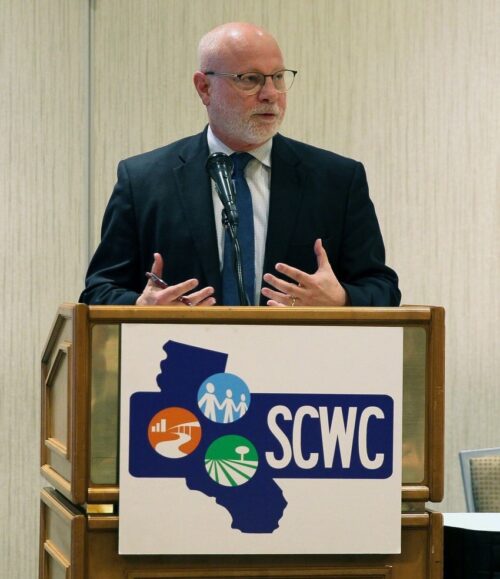 The Southern California Water Coalition is a nonprofit, nonpartisan organization, comprised of leaders from a variety of businesses, cities, agricultural groups, labor unions, environmental organizations, water agencies, as well as the general public. Established in 1984, the Coalition has 200 members from across Southern California who facilitate productive dialogue and build consensus to solve California’s most critical water issues.
The Southern California Water Coalition is a nonprofit, nonpartisan organization, comprised of leaders from a variety of businesses, cities, agricultural groups, labor unions, environmental organizations, water agencies, as well as the general public. Established in 1984, the Coalition has 200 members from across Southern California who facilitate productive dialogue and build consensus to solve California’s most critical water issues.
Charles Wilson is the
1. What is the biggest water challenge facing Southern California? What should Southern California be doing to secure future water supplies?
Without a doubt, the most significant water challenge we’re facing in Southern California – and more broadly across the entire Southwest – is adapting to the effects of a changing climate. The results are not unexpected: rising temperatures and sea level, declining snowpack, reduced runoff, more frequent and intense periods of rainfall and drought, and increasing occurrence of wildfire. What is unexpected, though, is the rate at which all these things are happening.
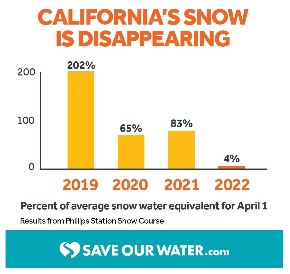 The changes happening in California water are quicker and have a greater impact than expected. Look at the last water year ending on September 30, 2021. Snowpack in the Northern Sierra was 72% of normal, but it didn’t translate into much river runoff. Sacramento River runoff was a dismal 38% of normal. That’s a big shift, and it’s not a good one.
The changes happening in California water are quicker and have a greater impact than expected. Look at the last water year ending on September 30, 2021. Snowpack in the Northern Sierra was 72% of normal, but it didn’t translate into much river runoff. Sacramento River runoff was a dismal 38% of normal. That’s a big shift, and it’s not a good one.
This water year, Northern Sierra snowpack peaked low at 61% of normal, and it peaked early – 2.5 months earlier than usual. Then we experienced the driest January through March on record. It adds up to the historic and severe drought challenging all of us.
As with all droughts, not all areas are affected equally, and some portions of Southern California are more prepared to respond than others. The one thing that is the same is that water managers across California need to adapt in real time.
Looking to the future, Southern California needs to keep the focus on – and even accelerate – investments to diversify its water supply portfolio. We need to invest in local supplies, including stormwater capture, water recycling, groundwater replenishment and desalination. We must continue to do more to increase water use efficiency as a long-term goal and conservation as a short-term one in every way we can. Over time, we must transform our outdoor landscapes to be more suitable for our climate, acknowledging that this will take time.
 In our view, improving the reliability of our imported supplies from Northern California and the Colorado River is vital. The State Water Project is the backbone of California’s water supply, and it needs our attention. During this unprecedented drought, the California Department of Water Resources said, the Delta Conveyance Project would have helped catch about 236,000 AF of water during the big storms at the end of 2021. That water could have been put into storage to help us out now. Modernizing CA’s
In our view, improving the reliability of our imported supplies from Northern California and the Colorado River is vital. The State Water Project is the backbone of California’s water supply, and it needs our attention. During this unprecedented drought, the California Department of Water Resources said, the Delta Conveyance Project would have helped catch about 236,000 AF of water during the big storms at the end of 2021. That water could have been put into storage to help us out now. Modernizing CA’s
water supply infrastructure is critical to adapting to our new climate reality.
So we must invest in conveyance improvements and more water storage. We must also address the effects of subsidence along the California Aqueduct. For the Colorado River, we need to continue working with our partners in California, the other Basin States, and Mexico to stabilize Lake Mead and Lake Powell water levels. At the same time, we must figure out how to manage the system with less water than anyone envisioned when rights were divvied up in 1922.
It’s a massive undertaking, and some of these fixes will take many years and billions of dollars to implement. But if we want to ensure that California has enough water for its population and economy, these investments are our best hope.
2. At the June 7 meeting of the State Water Board, the data submitted by urban water agencies showed urban water use in April rose 15% statewide and 26% in some areas of Southern California. What do urban water managers and officials need to be doing to improve the water conservation numbers?
Experience gives me confidence that Californians are willing to do their part. Increased outreach and media attention will help, and if that doesn’t meet the mark, then I think we will see mandatory restrictions and new landscape ordinances. Increasing potable water prices and incentives for larger users to tap into recycled water will make a big difference.
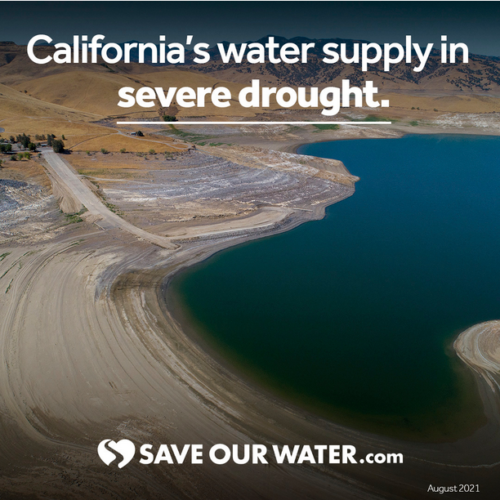 I want to make a technical point about the baseline year being used to compare water usage. It can be deceiving to compare monthly water usage from one year (2022) to another (2020) without accounting for temperature, precipitation, and evapotranspiration rates. These factors have a major impact on water usage. For example, evapotranspiration rates reflecting a plant’s water demand were 41% higher in March 2022 than in March 2020. These water use figures should be indexed or adjusted to reflect these differences.
I want to make a technical point about the baseline year being used to compare water usage. It can be deceiving to compare monthly water usage from one year (2022) to another (2020) without accounting for temperature, precipitation, and evapotranspiration rates. These factors have a major impact on water usage. For example, evapotranspiration rates reflecting a plant’s water demand were 41% higher in March 2022 than in March 2020. These water use figures should be indexed or adjusted to reflect these differences.
The bottom line? I think people want to hear about big solutions for what seems like a big problem. Turning the tap off when you brush your teeth is an excellent small action, but we need big, bold approaches. Replacing your thirsty lawn with drought-tolerant, climate-appropriate plants will significantly impact your household water use. But we are not going to conserve our way out of this problem. As a state, we need to do more than just demand reduction. We need to do some big, visionary things, and we need to make sure people know about them.
3. In Southern California, some areas served only by the State Water Project, such as Las Virgenes Municipal Water Agency, have very little water and really tough water restrictions. What could have been done, and what should be done to prevent this in the future?
It all comes back to the much-needed modernization of the State Water Project’s delivery system through the Sacramento-San Joaquin Delta over the long term. Updating this system is critical to Governor Newsom’s Water Resilience Portfolio, the broad effort to ensure our state’s water resiliency in light of climate change impacts. In the short term, I know that Metropolitan Water District is looking at improving its distribution system to get more water from Diamond Valley Lake to these areas.
It’s true that Las Virgenes Municipal Water District (LVMWD) is among the most severely impacted agencies in Southern California in this drought emergency. There are two main reasons for the acute impact on that area. First, LVMWD lacks local water supplies that are suitable for drinking water. The region is not blessed with groundwater due to its geology – predominately made up of Conejo volcanics (volcanic rock and sediment). And the minimal surface water that flows through their creeks and streams is brackish.
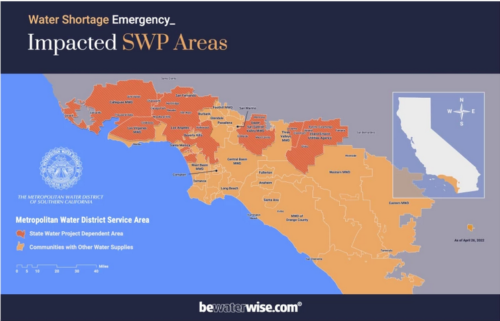 As a result, the region relies entirely on imported supplies, primarily sourced from the State Water Project, for its drinking water. LVMWD is a leader in water recycling – dating back to the early 1970s when they were the first agency in California to receive an unrestricted permit for using recycled water for irrigation purposes. Although recycled water makes up 20% of their overall demand, all their drinking water supplies are currently imported. That is in the process of changing, though, with their Pure Water Project Las Virgenes-Triunfo, an innovative potable reuse project that will make up 15% of their water supply in the future. The $250 million project is being advanced through their joint powers authority in partnership with the Triunfo Water and Sanitation District. Completion of this project will be a major step forward by LVMWD to diversify its water supply portfolio.
As a result, the region relies entirely on imported supplies, primarily sourced from the State Water Project, for its drinking water. LVMWD is a leader in water recycling – dating back to the early 1970s when they were the first agency in California to receive an unrestricted permit for using recycled water for irrigation purposes. Although recycled water makes up 20% of their overall demand, all their drinking water supplies are currently imported. That is in the process of changing, though, with their Pure Water Project Las Virgenes-Triunfo, an innovative potable reuse project that will make up 15% of their water supply in the future. The $250 million project is being advanced through their joint powers authority in partnership with the Triunfo Water and Sanitation District. Completion of this project will be a major step forward by LVMWD to diversify its water supply portfolio.
The second major challenge faced by LVMWD is that they are within a portion of MWD’s service territory known as the “State Water Project (SWP) dependent areas.” These areas are supplied almost exclusively with SWP deliveries, which are in very short supply due to 5% allocation. Beginning on June 1, 2022, MWD began receiving minimum human health and safety deliveries from the SWP to support needs within the SWP-dependent areas. This required implementing an Emergency Water Conservation Program for these areas, which MWD’s Board adopted on April 26, 2022. Additionally, MWD’s infrastructure does not currently have the flexibility or capacity necessary to convey water supplies stored in Diamond Valley Lake or from the Colorado River Aqueduct to LVMWD and its immediate neighbors that are fed from the West Branch of the SWP, Calleguas Municipal Water District and Los Angeles Department of Water and Power. Similar challenges face three agencies on the East Branch of the SWP: Three Valleys Municipal Water District, Upper San Gabriel Municipal Water District and Inland Empire Utilities Agency.
To address the challenges faced by the SWP-dependent areas, MWD has initiated a process to identify and implement a combination of improvements required to be more resilient for future droughts. LVMWD and MWD’s other member agencies are participating in the process while simultaneously evaluating opportunities within their systems to improve reliability.
I repeat myself, but we need to implement an “all-of-the-above” approach to solving our water crisis. It’s going to take collaboration. It’s going to take compromise. I believe we can do it, but we’re going to have to come together.
4. The Southern California Water Coalition is supportive of the Sites Reservoir project, which would build a new reservoir in Northern California, north of the Delta. How would Southern California benefit from a reservoir so far away?
California’s water system is an interconnected grid, similar to what we have for energy. The Sites Reservoir Project would support this entire state system, whether that water is used to meet agricultural, environmental or cities’ needs.
The proposed Sites Reservoir, located in Glenn and Colusa Counties, would create an additional 1.5 million acre-foot off-stream storage, helping us adapt to the severe climate change impacts we face. In addition, the reservoir would create new recreational opportunities and help to restore critical habitat for fish and wildlife.
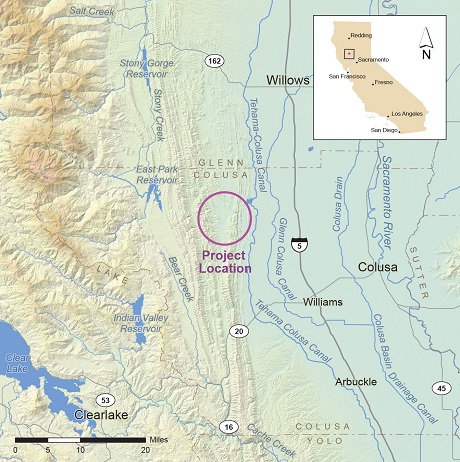 Sites Reservoir would store more dedicated environmental water than anywhere else in the state. It would help mitigate the impacts of climate change, particularly temperature increases that will shrink our snowpack and support cold water flows needed for spawning and migration of Salmon. Sites Reservoir will also improve the reliability of the State and Central Valley Projects. More integrated operations between SWP and CVP will mean that both projects work better together.
Sites Reservoir would store more dedicated environmental water than anywhere else in the state. It would help mitigate the impacts of climate change, particularly temperature increases that will shrink our snowpack and support cold water flows needed for spawning and migration of Salmon. Sites Reservoir will also improve the reliability of the State and Central Valley Projects. More integrated operations between SWP and CVP will mean that both projects work better together.
Specifically in Southern California, Sites Reservoir will help us by reducing the potential and frequency of concurrent years of low allocation from the SWP. As readers of Maven’s Notebook know, Southern California gets about a third of its water from the SWP. So we’re reducing our risk of multiple years of low allocations. It’s a big deal for MWD’s service area – particularly those agencies within the SWP-dependent areas.
Also, the project will improve the quality of water delivered via the SWP which is critical for replenishing groundwater and blending down other sources of water supply, such as from the Colorado River Aqueduct, that are comparatively higher in salinity. A good indication of the project’s value to our region is the fact that the MWD Board appropriated $20 million to continue its participation in the planning, permitting and environmental review of the Sites Reservoir Project in an April 2022 board resolution.
With its potential to benefit all Californians, the Sites Reservoir Project is essential to our state’s water future.
5. In 2018, voters in Los Angeles County approved Measure W, which provided funds for stormwater projects. How has Southern California progressed on stormwater capture?
Measure W, or the Safe Clean Water Program, has transformed the way people in Los Angeles County look at stormwater. Now more than ever, people recognize its value as an important water resource and don’t just see it as a nuisance or an unusable waste product.
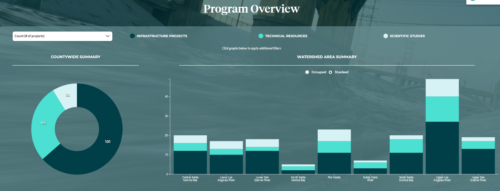 I’m most excited about how the program has brought together a diverse group of stakeholders to think differently about stormwater projects: to find multiple benefits that improve water quality, increase water supply and enhance our community. Momentum continues to build with more than 159 projects or studies across the county. They also do a good job communicating about what’s happening; a Program Overview/Dashboard and project location map are available on the Safe Clean Water Program website.
I’m most excited about how the program has brought together a diverse group of stakeholders to think differently about stormwater projects: to find multiple benefits that improve water quality, increase water supply and enhance our community. Momentum continues to build with more than 159 projects or studies across the county. They also do a good job communicating about what’s happening; a Program Overview/Dashboard and project location map are available on the Safe Clean Water Program website.
There is definitely more to be done on stormwater capture. It is important to note that as a water source, it’s a relatively expensive one. People who talk about it like it will solve Southern California’s water supply problems on its own aren’t taking a critical look at its true potential. It will take stormwater capture projects, fixes to our state water system, increased storage, water recycling, reuse, and more.
What’s important is that we’re always moving forward. Trying bold new approaches, learning from our setbacks and building upon our successes. We have a lot of challenges to tackle when it comes to California water, but we have to succeed. Our way of life, our economy and our people depend upon it.



